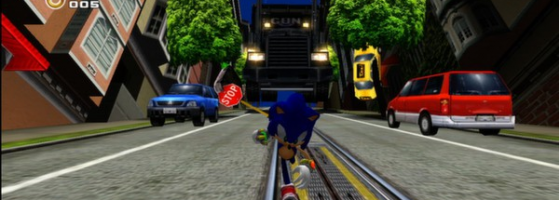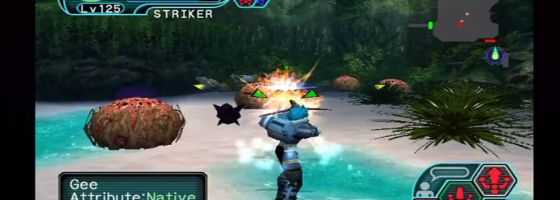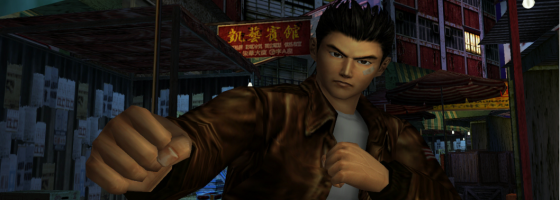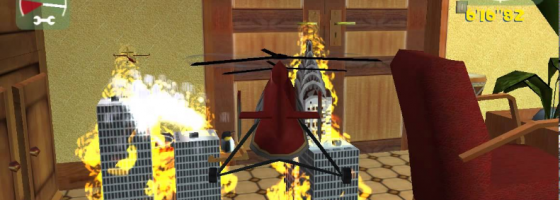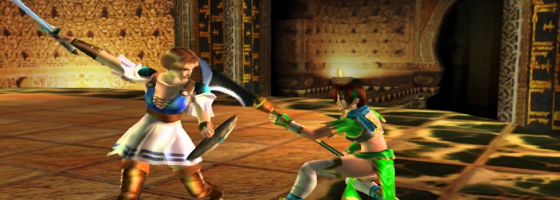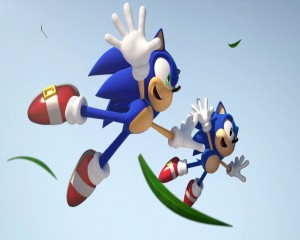This year marks the 17th anniversary of the Sega Dreamcast: Sega’s last entry in the console wars. Even though this was the final console, the Dreamcast was home to a number of great games. For today’s post, I want to look back at five of my favorite titles from the console.
Before we begin, there are a lot more interesting and unique games for the system that we won’t be talking about here. My honorable mention would be the horror game Illbleed. A crazy mix of horror genres; I still love it for having the greatest horror movie villain name: Ohnoman
1: Sonic Adventure 1 and 2
I’m technically cheating by having two games here, but it’s my list. Instead of following in Mario’s footsteps with games that grew from previous designs, Sega went all out with the adventure series. Both Sonic Adventure 1 and 2 extended the gameplay with multiple modes based on different characters.
You had traditional Sonic stages, Knuckles hunting, Tails mech battles and fishing…okay, they weren’t all winners. For Sonic’s first official 3D outings, the adventure games weren’t bad in terms of control. Both games also made use of the Virtual Memory Units or VMUs for little mini games and Chaos raising.
While the Adventure games never hit the same heights as Mario, they were certainly different and stood out from the rest of the 3D platformers for the time. We can also remember the infectiously catchy “Escape from the City” song from Sonic Adventure 2.
2: Phantasy Star Online
PC gamers by this time were enjoying the likes of Everquest and MUDs for online multiplayer experiences, but Phantasy Star Online was the first attempt at a MMO on the console. Using a dial-up connection (oh the horror), players could team up worldwide to play through the game’s dungeons.
For being the first of its kind, PSO was a good attempt at MMO and ARPG design. Players could choose from different classes, find loot and team up for boss fights. While it was loosely connected to previous Phantasy Star games, PSO told an interesting story with varied environments.
Even though PSO featured APRG elements from the PC, the game was very much playable on a gamepad. PSO was updated with more episodes and re-released over the years. If it wasn’t for our next game, PSO would have been the most ambitious titles from Sega during the Dreamcast era.
As a bittersweet note, I found out about the Dreamcast going under and Sega leaving the market while I was playing PSO at the time.
3: Shenmue
The first three games on this list could be considered defining titles for the Sega Dreamcast. Shenmue stands as one of the biggest games ever made. It was to be Yu Suzuki’s masterpiece; taking 4 years to be made and an estimated 41 million dollars. Shenmue was one of the first games to be considered open world, and arguably the first to not be defined by one genre.
The game combined fighting, exploration, adventure and mini games into one experience. Playing the game, you were free to explore the entire town at your leisure. Shenmue brought a sense of scale and intimacy that very few games have been able to replicate. Because of how small the overall gamespace was, they were free to pack it with detail in every building.
The story was to be told over four games. Starting with a murder mystery and eventually growing into a country-spanning plot. A sequel featuring improved gameplay was released at the time only in Japan and Europe, but not in the US. Besides the open-world gameplay, Shenmue also introduced modern gamers to QTEs.
As an interesting side-note, Shenmue would also go on to influence the popular Yakuza series. With the success of the Shenmue 3 kickstarter, we may finally get the ending to this epic series.
4: Toy Commander
The next game is a personal favorite of mine. I’m a sucker for games that do interesting things with scale and/or aesthetics, and Toy Commander certainly fits. The game had you controlling various toys in a house while completing missions in a variety of settings. As a toy, each room of the house became a massive area to explore.
From fighting spaceships, racing cars, and fighting the bosses, Toy Commander kept things interesting. There was just something special about being this little toy in a great big world. Getting that sense of scale right would lead to titles such as the amazing Shadow of the Colossus and what it means to be small in a big world.
The game was challenging, as you had to complete each mission under a par time. This was the only way to unlock the boss fights who would become your units for the final battle. As a final point, I really enjoyed the ending of the game and how it went off in a different direction.
5: Soul Calibur
For my last game of this list, we have one of the best fighting games ever made. Soul Calibur is the sequel to Soul Edge, but the first game in the series for consoles. Soul Calibur was one of the first great fighting games to feature weapon-based fighting.
Each character handled differently, and the weapon system made fighting very fluid for the time. The fighting was less focus on hard-coded combos and more on figuring out how to chain moves together. What helped to elevate Soul Calibur above other fighting games were the singleplayer options.
Besides arcade/story mode, Soul Calibur had a variety of scenario challenges. Framed as an around the world event, you fought the other characters under different conditions. The variety gave Soul Calibur an engaging singleplayer offering at a time where most fighting games were multiplayer-focused.
This kind of singleplayer design would become a standard of the series, and be seen in other fighting games like Mortal Kombat 9 and 10. The additions also helped to make Soul Calibur one of the first games to be superior to its arcade version; a trend that quickly grew in the early 00’s.
9-9-99:
The Sega Dreamcast would be the final system from Sega and end their time in the console wars. It was the first console to have integrated online access and the proprietary VMU system. However, their time in the sun quickly ended with the release of the Playstation 2 and Xbox.
Both systems were designed around offering more value and power to the consumer and had larger libraries. With Sony, the ability to play DVDs for the first time in a game console gave them a leg up. Microsoft had both Xbox Arcade and the major hit Halo to drive sales.
While Sega’s first party games were good, they weren’t able to attract the big name third-party developers and series of the time. In 2001, they found themselves technologically behind everyone else with the arrival of the GameCube.
It was announced in March of 2001 that Sega was leaving the console market due to organizational issues and not having the market share it needed.
With all that said, I hope you enjoyed this quick look back at the Dreamcast. I’m very sure that for those of you reading this, you have your own favorite games of the system. And as a final RIP, I do want to give a shout-out to the Sega Dreamcast Magazine which I also had to say goodbye to.
If you enjoyed this post, please consider donating to the Game-Wisdom Patreon campaign. Your donations can help to keep the site going and allow me to produce more great content. Follow me on Twitter @GWBycer, and you can find daily video content on the Game-Wisdom YouTube channel.


